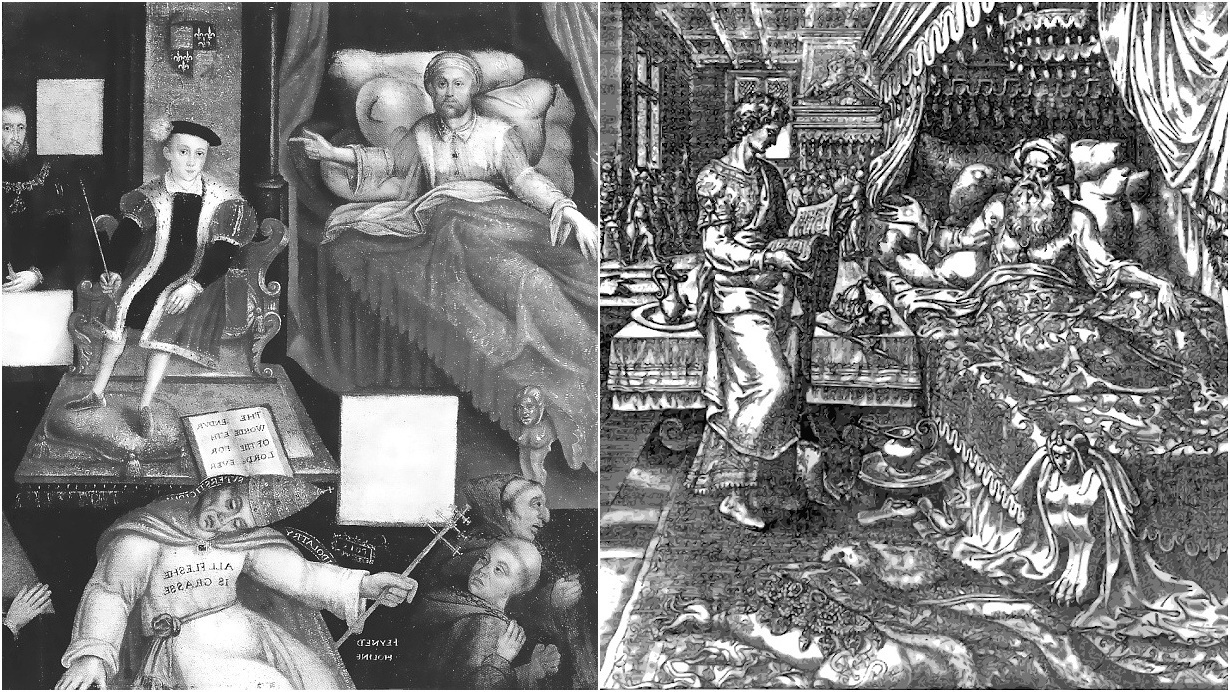
Who was first?
※ Gustave Doré’s illustration to Samuel Taylor Coleridge’s “The Rime of the Ancient Mariner”,
※ Henry Holiday’s book cover design to Lewis Carroll’s “The Hunting of the Snark”.
2024-06-17 (Henry Holiday’s 185th birthday)
Lewis Carroll, Henry Holiday and Joseph Swain's Tragicomedy

Who was first?
※ Gustave Doré’s illustration to Samuel Taylor Coleridge’s “The Rime of the Ancient Mariner”,
※ Henry Holiday’s book cover design to Lewis Carroll’s “The Hunting of the Snark”.
2024-06-17 (Henry Holiday’s 185th birthday)
One of the surest tests [of a poet’s superiority or inferiority] is the way in which a poet borrows. Immature poets imitate; mature poets steal; bad poets deface what they take, and good poets make it into something better, or at least something different. The good poet welds his theft into a whole of feeling which is unique, utterly different than that from which it is torn; the bad poet throws it into something which has no cohesion. A good poet will usually borrow from authors remote in time, or alien in language, or diverse in interest.
T. S. Eliot, p. 114 in The Sacred Wood: Essays on Poetry and Criticism, 1920
Likewise, a good illustrator welds the theft into a whole of feeling which is unique, utterly different and sometimes even funnier than that from which it is torn.

And Lewis Carroll may have borrowed from Thomas Gray.
All art is infested by other art.
(Leo Steinberg, in Art about Art, 1979)
Gustave Doré was an inspired master thief too: Segments from:
Segments from:
※ Plate I (mirror view) of Gustave Doré’s illustrations to Miguel de Cervantes’ Don Quixote (1863),
※ Matthias Grünewald’s Temptation of St Anthony (c. between 1512 and 1516, a panel of the Isenheim Altarpiece, now located at Musée Unterlinden, Colmar, France).


2018-02-18, update: 2022-09-05
 The monsters already were there. But what did Gustave Doré see in the sky in Matthias Grünewald’s painting?
The monsters already were there. But what did Gustave Doré see in the sky in Matthias Grünewald’s painting?
Look at walls splashed with a number of stains, or stones of various mixed colours. If you have to invent some scene, you can see there resemblances to a number of landscapes, adorned with mountains, rivers, rocks, trees, great plains, valleys and hills, in various ways. Also you can see various battles, and lively postures of strange figures, expressions on faces, costumes and an infinite number of things, which you can reduce to good integrated form. This happens on such walls and varicoloured stones, (which act) like the sound of bells, in whose peeling you can find every name and word that you can imagine.
Do not despise my opinion, when I remind you that it should not be hard for you to stop sometimes and look into the stains of walls, or the ashes of a fire, or clouds, or mud or like places, in which, if you consider them well, you may find really marvelous ideas. The mind of the painter is stimulated to new discoveries, the composition of battles of animals and men, various compositions of landscapes and monstrous things, such as devils and similar things, which may bring you honor, because by indistinct things the mind is stimulated to new inventions.
Reprinted from the Oxford edition of Selections from the Notebooks of Leonardo da Vinci, edited by Irma A. Richter. The selections are from da Vinci’s A Treatise on Painting (Trattato della pittura).
(Thanks to Jono Borden for asking.)
2017-12-29, updated: 2022-03-10
2020-12-19:
Monstrous Heads | Face it! | Tweets